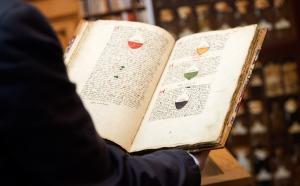
Watercolour, Woodcut and Wax: Medical Illustration Around 1900
Speaker: Dr Sam Alberti (Royal College of Surgeons of England)
Anatomy and surgery have strong extra-textual elements. The development and transmission of these crafts rely heavily on visual communication in a range of media, whether by practitioners or (other) illustrators.
Some artists are justifiably renowned (eg Jan van Rymsdyk in the 18th century), some not as famous as they deserve (eg Joseph Towne and Henry Vandyke Carter in the Victorian era), and some (like 20th-century draughtsmen Kirkpatrick Maxwell and Sydney Sewell) are almost lost to history. Each brought new approaches, but older illustrative methods have also endured, even if deployed for different ends.
The early 20th century was a key period in the history of depicting anatomy, whether surgical, morbid or comparative. Mass reproduction brought its own challenges and opportunities; pathological illustration played a surprising role in the medical history of WWI. Examining such developments aids our understanding of the relationship between clinician and artist, text and image, material and visual culture.



